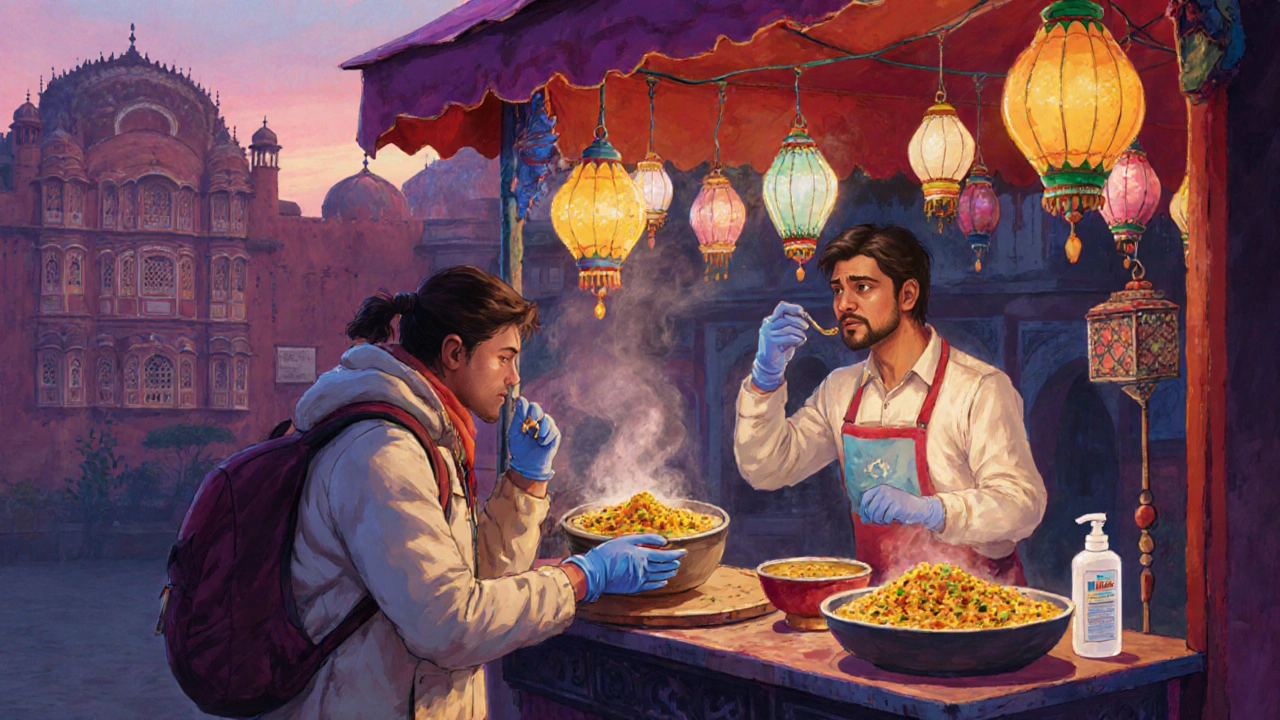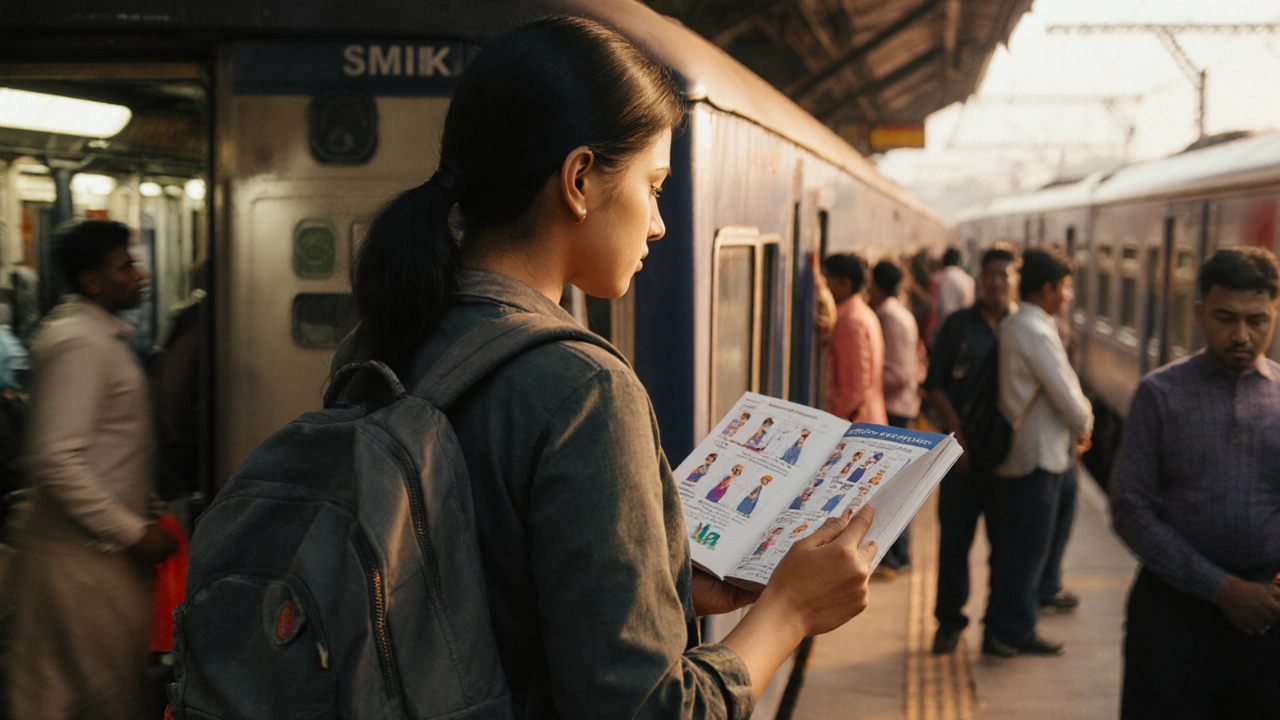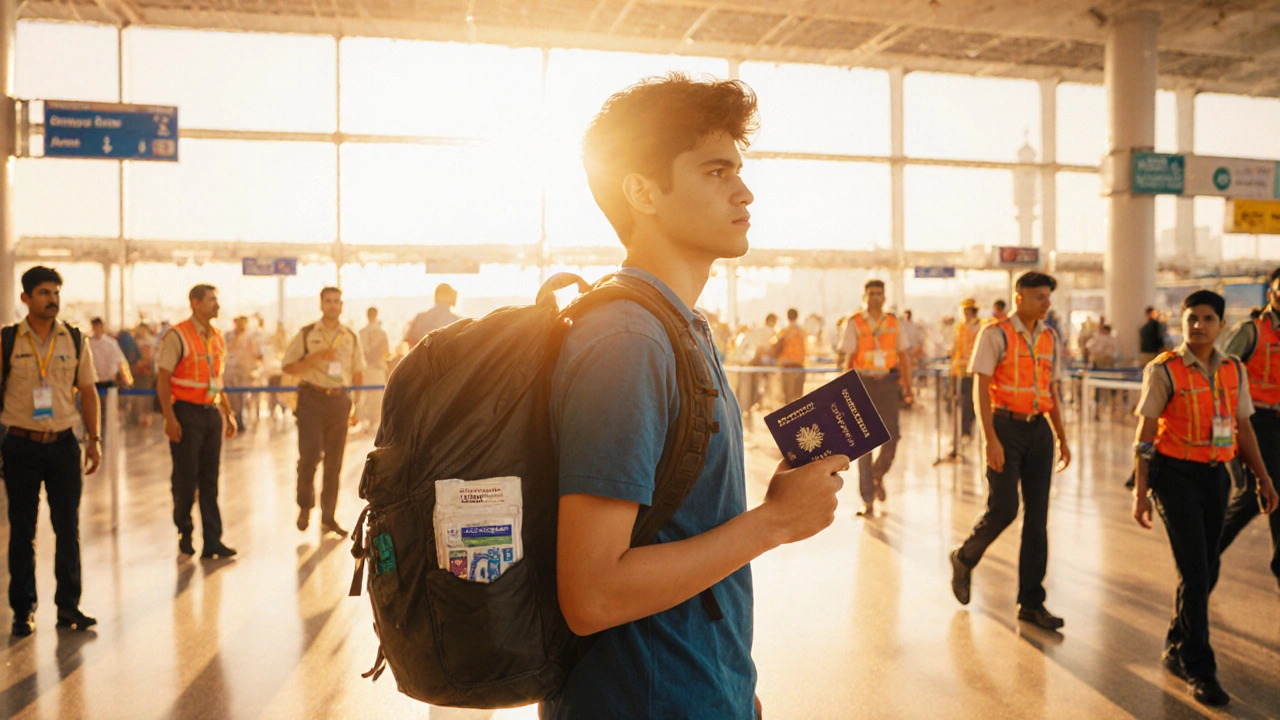India Trip Cost Estimator
Travel Duration
Accommodation Type
Daily Meal Budget
Transportation Choice
Planning a trip to India can feel like stepping into a whirlwind of colors, sounds, and flavors that overwhelm even seasoned travelers. The good news? With a few smart moves, you can turn the chaos into an adventure you’ll cherish forever. Below are the practical steps that let you enjoy the magic without the mayhem.
Pre‑Travel Prep: Paperwork, Health, and Peace of Mind
India is a land of diverse climates and cultures, which means the entry requirements differ by region and season. Start with a valid passport (at least six months left) and an e‑visa that covers tourism, business, or medical purposes. The online portal issues visas in 72hours for most nationalities, but give yourself a buffer in case of hiccups.
Health-wise, the World Health Organization lists Vaccination as essential for hepatitisA, typhoid, and tetanus. If you’re heading to the Himalayan north, add Japanese encephalitis to the list. Pack a basic first‑aid kit with band‑aids, antiseptic wipes, and any prescription meds you need.
Don’t skimp on Travel Insurance. Look for policies that cover medical evacuation, lost baggage, and trip cancellation. A good plan can mean the difference between a quick clinic visit and a costly hospital stay.
Packing Essentials: Dress for Comfort, Not Just Fashion
The climate swings dramatically: from the scorching deserts of Rajasthan to the humid backwaters of Kerala. Pack lightweight, breathable fabrics like cotton and linen for most of the country, but bring a warm layer and a scarf for cooler evenings in the north.
- Reusable water bottle with a built‑in filter (makes refilling safe on the go).
- Universal power adapter (India uses typeC, D, and M plugs).
- Portable charger - you’ll thank it when the train’s power cuts out.
- Travel‑size detergent - hand‑washing shirts in a hostel sink is common.
Leave high‑end jewelry at home; simple pieces are less likely to attract unwanted attention.
Getting Around: Mastering the Indian Transport Maze
India’s transport network is massive, but a few shortcuts make navigation painless.
Indian Railways is the backbone for long distances. Book tickets through the IRCTC website or the handy RailYatri app. For comfort, choose AC3‑tier or AC2‑tier classes; they’re affordable and air‑conditioned.
Short hops? Ride a rickshaw in Delhi, a auto‑rickshaw in Mumbai, or a tempo‑traveller in smaller towns. Always agree on the fare before you hop in - many drivers use meters, but negotiating is common.
| Mode | Average Speed | Cost (per 100km) | Comfort |
|---|---|---|---|
| Train (AC2‑tier) | 80km/h | $15 | High |
| Domestic Flight | 600km/h | $30 | Very High |
| Bus (Sleeper) | 50km/h | $10 | Medium |
| Shared Auto | 30km/h | $5 | Low |
Download Google Maps offline packs for the regions you’ll visit; the signal drops in remote hill stations, and offline maps still show routes and landmarks.
Food & Water: Eat Deliciously, Stay Healthy
Indian street food is legendary, but a few rules keep you from an unwanted stomach upset.
Street Food stalls with a constant crowd are usually the safest bet - the turnover means fresh ingredients. Look for vendors cooking in front of you, and avoid anything that’s been sitting out for hours.
Stick to bottled or filtered water. Even ice cubes can be a risk if they’re made from tap water, so it’s safer to skip drinks with ice unless you’re sure of the source. Fruit you can peel, like bananas and oranges, travel well.
If you’re curious about regional specialties, try Delhi’s buttery butter chicken, Kerala’s tangy fish curry, and Rajasthan’s spicy dal baati churma. Each dish tells a story of its locale.

Cultural Etiquette: Respect Rules to Blend In
India’s cultural tapestry is rich, and a few courteous habits earn you smiles and open doors.
When visiting Taj Mahal or any heritage site, dress modestly - shoulders and knees should be covered. Remove shoes before entering a temple; a small cloth or shoe bag can keep them clean.
Use your right hand for eating, handing over money, or receiving items; the left hand is considered unclean in many parts. If you’re invited into someone’s home, bring a small gift like sweets or fruits.
Public displays of affection are frowned upon in smaller towns and rural areas. A friendly smile and a nod usually do the trick.
Health & Safety: Stay Alert, Not Anxious
Pollution can be heavy in major cities like Delhi and Kolkata. Carry a reusable mask, especially during the winter smog season (November‑January). An air‑purifying mask reduces inhalation of fine particles.
Scams targeting tourists exist, mainly around popular attractions. Common tricks include “fake police” asking for a bribe and “overpriced guides” offering unsolicited tours. If approached, politely decline and walk away - genuine officials will have proper identification.
Emergency numbers: 112 works nationwide for police, fire, and medical services. Keep a note of the nearest hospital and the local embassy contact (for New Zealand travelers, the embassy is in New Delhi).
Money & Connectivity: Keep Cash Handy, Stay Connected
While digital wallets (Paytm, Google Pay) dominate city payments, cash is still king in villages and many markets. Carry small denominations (₹10‑₹500) for quick transactions.
ATMs dispense cash in Indian rupees (₹). Beware of “dynamic currency conversion” at merchant terminals - they may offer to charge you in your home currency at a poor exchange rate. Decline and let the card charge in INR.
For internet, buy a local SIM card (Jio, Airtel, or Vodafone Idea) at the airport or a nearby store. A prepaid plan with 4‑GB data and unlimited calls costs around $5‑$7 and lasts a month.
Staying Flexible: Embrace the Unexpected
India’s monsoon season (June‑September) transforms landscapes, especially in the south. Roads can flood, and train delays are common. Treat it as an adventure - a rain‑soaked tea stall offers the coziest experience.
If a train is canceled, have a backup plan: a night bus or a rideshare app like Uber or Ola. Flexibility keeps stress low and opens doors to off‑the‑beaten‑path sights.
Quick Survival Checklist
- Secure e‑visa and print a copy of the approval.
- Get recommended vaccinations and pack a mini first‑aid kit.
- Buy comprehensive travel insurance.
- Pack breathable clothing, a warm scarf, reusable filtered water bottle, and universal adapter.
- Download offline maps and the RailYatri app.
- Purchase a local SIM for data and stay connected.
- Keep cash in small notes; use UPI apps for larger purchases.
- Follow food safety rules - choose busy street food stalls, drink bottled water.
- Respect local customs - modest dress, right‑hand usage, remove shoes in sacred places.
- Carry a mask during winter in big cities and stay aware of common scams.

Frequently Asked Questions
Do I need a visa to travel to India as a New Zealander?
Yes. New Zealand citizens can apply for an e‑visa online, which is valid for tourism, business, or medical visits and typically takes 72hours to process.
What are the safest ways to travel between major cities?
Domestic flights are fastest, but for a balanced experience, AC2‑tier Indian Railways offers comfort and scenic views. Book through the official IRCTC portal or trusted apps.
Is street food in India safe for tourists?
Generally, yes, if you choose stalls with high turnover and visible cooking. Avoid food that has been sitting out for long periods and always drink bottled or filtered water.
What should I do if I fall ill while traveling?
Contact your travel insurance provider first; they can guide you to a reputable hospital. Keep a list of nearby hospitals and the embassy phone number handy.
How can I stay connected without paying a fortune?
Buy a prepaid local SIM card (Jio, Airtel, or Vodafone Idea) at the airport. A basic data‑plus‑calls plan costs around $5‑$7 per month and offers good coverage across most of the country.
